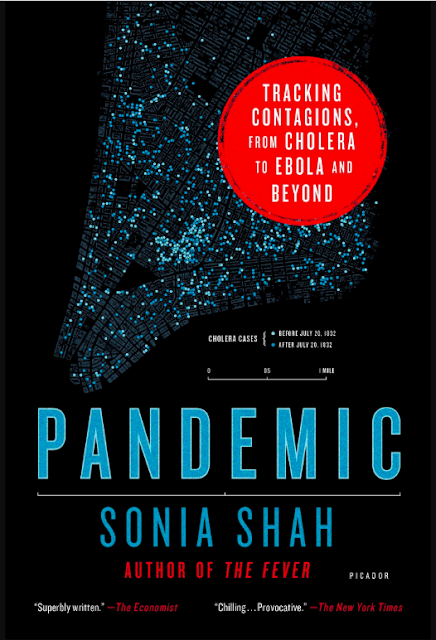Bone Metastasis
Various cancers can disseminate to the bone, including the most common malignancies in men and women, prostate and breast cancer, respectively. This article reviews the roles of the bone microenvironment in skeletal metastasis, highlighting the biology and clinical relevance of circulating tumour cells and disseminated tumour cells. Notably, bone metastases are associated with considerable morbidity and a poor prognosis, and the authors also discuss established and future therapeutic approaches for targeting components of the bone microenvironment to prevent or treat skeletal metastases.
Cancer is one of the leading causes of death worldwide. Despite medical progress in controlling primary tumours, resulting in prolonged survival, most patients with cancer will eventually develop metastatic disease and die from the associated complications. The two most common malignancies in women and men, breast cancer and prostate cancer, respectively, have been the subject of major therapeutic improvements with increasingly effective, rationally designed treatment options. These tumour types share a high propensity for bone metastasis. In autopsy studies from the era before mammography and prostate-specific antigen (PSA) screening, bone micrometastases from breast and prostate cancers were found to be more common than expected based on clinical findings, with 70–90% of patients having evidence of such metastases. In the current era, the majority of patients diagnosed with early stage breast or prostate cancer develop bone metastases after years of latency, or not at all; however, certain subgroups, such as men with castration-resistant prostate cancer (CRPC) and women with oestrogen receptor (ER), progesterone receptor and HER2 triple-positive breast cancer, have a high risk of developing bone metastases. Bone metastases typically constitute a ‘point of no return’, given that they are mostly incurable and are associated with fractures, pain, disability, reduced quality of life and a poor prognosis. Thus, the development of bone metastases marks a shift in treatment intent from cure to palliation, and thus increases the burden on both the individual and the health-care system.
The bone microenvironment is a distinct, highly dynamic compartment that hosts bona fide bone cells (osteoblasts, osteocytes, osteoclasts and their precursors), cells of the haematopoietic and immune systems, stromal cells, adipocytes, fibroblasts and endothelial cells, as well as an extracellular matrix (ECM) with large quantities of embedded growth and/or signalling factors. Functionally, these various populations of stem cells and mature cells interact to orchestrate bone remodelling, haematopoiesis and, thus, immune function during development, tissue regeneration and disease. For example, during osteogenic differentiation, mesenchymal skeletal stem cells (MSCs) and other osteoblast progenitors generate a high receptor activator of NF-κB ligand (RANKL) to osteoprotegerin (OPG) ratio to support osteoclast differentiation, whereas mature osteoblasts produce a lower, less osteoclastogenic ratio of these factors. Osteocytes, which are derived from osteoblasts, are not only the most abundant source of osteoclastogenic RANKL but also an exclusive source of the WNT signalling pathway antagonist sclerostin, which inhibits osteoblastogenesis from MSCs, thereby suppressing bone formation. These mutual interactions at the cellular and molecular levels ensure a dynamic balance between bone resorption and new bone formation and are, therefore, crucial determinants of bone health and disease, and specific alterations have been discovered in bone metastases, including activation of osteoclastic bone resorption, suppression of osteoblastic bone formation in osteolytic lesions, neoangiogenesis and aberrant osteoimmune interactions. In this context, tumour cells can exploit certain aspects of the bone microenvironment for homing, maintenance and expansive growth.
- Bone metastases are frequent events associated with advanced-stage malignancies, particularly breast and prostate cancers, and often result in pathological fractures, pain, disability, reduced quality of life and a poor prognosis.
- Circulating tumour cells can be detected in the blood using standardized liquid biopsy assays and can provide insights into the metastatic process, inform clinical risk stratification, and enable monitoring and tracing of resistance to therapy.
- Disseminated tumour cells (DTCs) can be detected in the bone marrow through bone marrow aspiration. Their fate is variable and can include apoptosis or immune-mediated cell death, persistence and dormancy, or progression to overt bone metastases.
- DTCs mutually interact with diverse components of the bone microenvironment, including bone cells, adipocytes, endothelial cells and various immune cells as well as the extracellular matrix. Survival strategies of DTCs involve interference with bone cell and adipocyte functions, immune evasion and neoangiogenesis.
- On the basis of emerging knowledge of the biology of bone metastasis, several bone-targeted therapies are currently under evaluation in preclinical studies and clinical trials.
- Approved therapies for patients with established bone metastases include bisphosphonates, the anti-receptor activator of NF-κB ligand (RANKL) antibody denosumab and radium-223.





















































